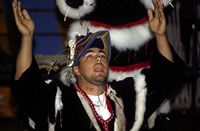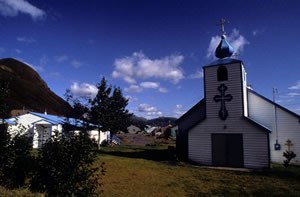 In 1994, the Council received its first call from a community resident to incorporate Traditional Ecological Knowledge (TEK) of spill area residents into the restoration program, and subsequently funded three projects on community involvement and TEK. Two years later, the 1996 annual restoration workshop had TEK as its theme and led to a set of protocols for incorporating TEK into restoration projects developed by a committee of Alaska Natives and others and approved later that year by the Trustee Council. In 1998, the final report for project 97052B was published as the Traditional Ecological Knowledge Handbook: A Training Manual and Reference Guide for Designing, Conducting, and Participating in Research Projects Using Traditional Ecological Knowledge. The handbook includes the Council’s 1996 TEK protocols.
In 1994, the Council received its first call from a community resident to incorporate Traditional Ecological Knowledge (TEK) of spill area residents into the restoration program, and subsequently funded three projects on community involvement and TEK. Two years later, the 1996 annual restoration workshop had TEK as its theme and led to a set of protocols for incorporating TEK into restoration projects developed by a committee of Alaska Natives and others and approved later that year by the Trustee Council. In 1998, the final report for project 97052B was published as the Traditional Ecological Knowledge Handbook: A Training Manual and Reference Guide for Designing, Conducting, and Participating in Research Projects Using Traditional Ecological Knowledge. The handbook includes the Council’s 1996 TEK protocols.
Examples of projects incorporating TEK as a result of Trustee Council efforts include:
 The Trustee Council funded Elders/Youth Conferences in 1995 and 1998 that brought together Alaska Native elders, youth, other subsistence users, scientists, and managers to share ideas about subsistence issues and facilitate community involvement. The Trustee Council paid for four people from each of 20 spill area communities to attend each conference. Participants shared stories, voiced frustration, and asked scientists questions about subsistence issues. They also developed ideas for youth to get more involved through spirit camps, internships, and educational opportunities. These workshops facilitated collaboration between communities of the spill area, while concerns and ideas generated at the conference were reported to the Trustee Council.
The Trustee Council funded Elders/Youth Conferences in 1995 and 1998 that brought together Alaska Native elders, youth, other subsistence users, scientists, and managers to share ideas about subsistence issues and facilitate community involvement. The Trustee Council paid for four people from each of 20 spill area communities to attend each conference. Participants shared stories, voiced frustration, and asked scientists questions about subsistence issues. They also developed ideas for youth to get more involved through spirit camps, internships, and educational opportunities. These workshops facilitated collaboration between communities of the spill area, while concerns and ideas generated at the conference were reported to the Trustee Council.